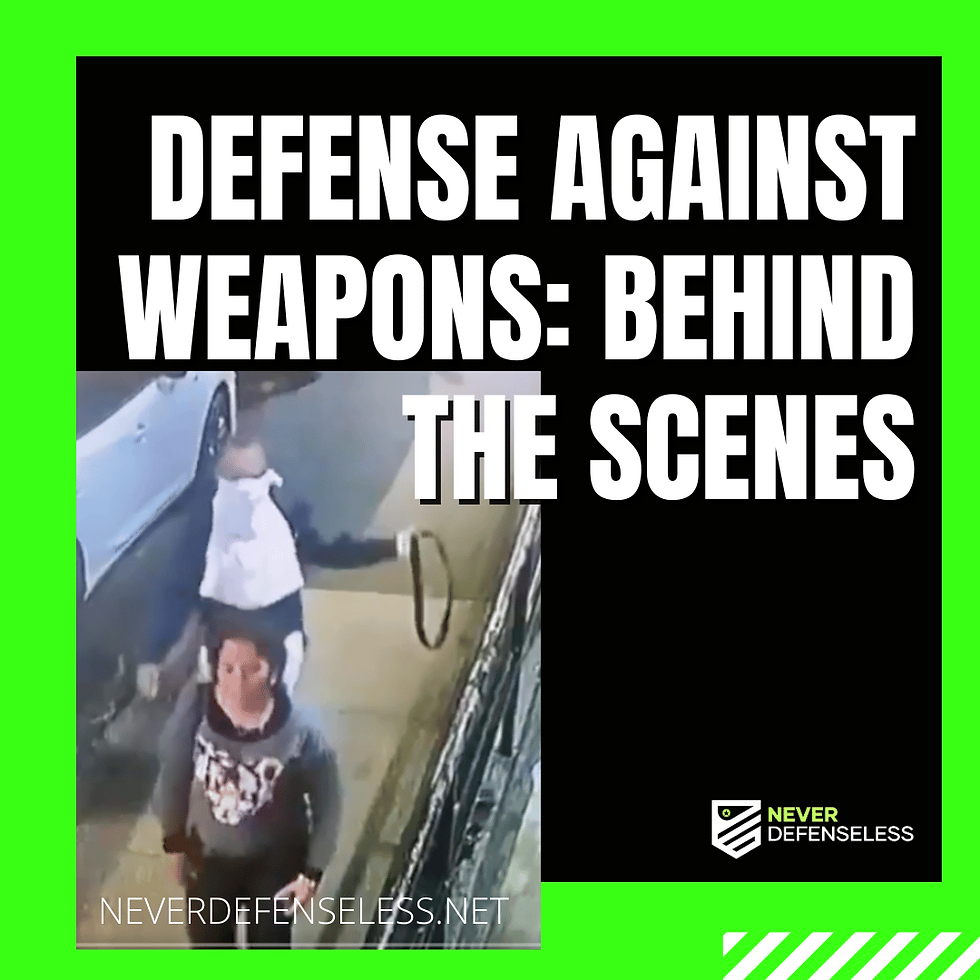Defense Against Weapons: Behind the Scenes
- WSDC

- Aug 17
- 3 min read
Module 3: Defense Against Weapons is currently in production with the content mostly complete and now progressing with the instructive photos being created.

We found that the Defense Against Weapons module is the natural outcome of training for both the Stay with People concept and they Go to People concept. During those modules, we invariably get the question "But Brad, what if he is holding a knife to my throat".
The Natural Lead into Defending Against Deadly Weapons
Of all the modules in the Never Defenseless series, Defense Against Weapons may be the hardest. And not just physically.
It demands more of you mentally, emotionally, and psychologically. You're about to learn how to respond when someone is actively trying to injure or kill you—using a weapon specifically designed to overpower, dominate, or destroy.
Let’s be clear: this is not theory. This is reality. And it is terrifying.
When weapons are introduced into an attack, everything changes. Suddenly, the stakes are life or death. The attacker doesn’t need to be strong. He doesn’t need to be skilled. He just needs to be willing—and the presence of a knife, a blunt object, or a gun dramatically increases his power.
As a trainer, I used to avoid this topic. I believed it was too dangerous, too reckless and too irresponsible to teach women they could defend themselves against a weapon with no weapon of their own. For years, I avoided including it in our women’s self-defense curriculum.
Until I heard Angelica’s story.
Angelica's Story Changed Everything About Defending Against Weapons
Angelica had recently separated from an abusive husband. She moved into a second-story apartment, trying to start over. One night, he kicked in her door and came after her with a knife. She called 911. The line stayed open. The recording would capture the violence that followed.
Her screams. His threats. The struggle.
A neighbor came in to see what was happening but was driven out by the homicidal ex with the knife.
Angelica used the distraction to escape.
She ran. He chased. She made it to the street before he caught her, knocked her down, and kept stabbing her. The incredibly fast arrival of police -- who literally drove up on the murderous scene -- saved her life.
Angelica’s case was not an outlier. After hearing more stories like hers—stories of cords, bricks, knives, and guns—I realized I could no longer ignore this part of the fight. It was irresponsible to not teach women how to respond when a weapon is involved.
That’s how this module came to life.
Why Teaching This Is So Hard
There is no perfect technique. No magic move. And any instructor who tells you otherwise is doing you a disservice.
An instructor I highly respect, Hock Hochheim, once said that every empty-hand defense against a weapon is “all shades of terrible.” That’s the reality.
But within that grim reality, we’ve found something important:
Some strategies work more often than others.
Some are easier to recall under pressure.
Some are built on techniques we’ve already learned in Module 1 and Module 2.
And those are the ones we focus on here.
No, they’re not perfect.
But they can give you the extra seconds you need to stay alive, get away, or get to help.





Comments